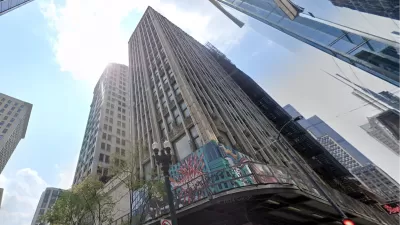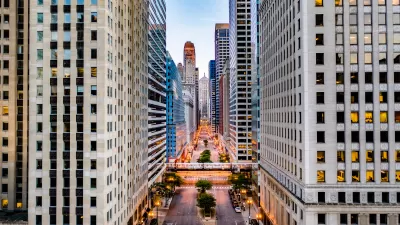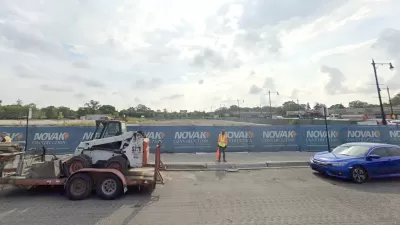Four commercial buildings in the Chicago Loop have been approved for redevelopment into housing in a bid to revitalize the city’s downtown post-pandemic.

Adaptive reuse of office buildings into housing is a popular topic across the country, particularly as more employees are working from home either part or full time since the pandemic. Downtowns in major cities like Chicago have been particularly hard-hit. Vacancy rates in downtown Chicago hit an all-time high of 21.2 percent at the end of 2023. But the Windy City is hoping to turn lemons into lemonade by converting four underused high-rise office buildings in its La Salle Street financial corridor in the Loop into 1,000 new apartments, reports Chicago Construction News.
Four projects have been selected so far, which according to Mayor Johnson’s office, are collectively valued at more than $528 million in development costs. The project’s developers will receive tax increment financing (TIF) assistance totaling more than $150 million to ensure 319 of the units will be rented at affordable rates (which the city defines as tenants earning an average of 60 percent of the area median income, or approximately $53,000 for a two-person household).
Additional projects are likely to come. Chicago Construction News reports that the city has allocated a total of $320 million of LaSalle TIF funding for “LaSalle Street Reimagined” projects slated for 2025 and 2026, “underscoring the city’s commitment to revitalizing and reinventing its urban landscape.” Construction on the four approved projects are projected to start in early 2025.
FULL STORY: Chicago commits $151 million to transform aging offices into affordable housing

Study: Maui’s Plan to Convert Vacation Rentals to Long-Term Housing Could Cause Nearly $1 Billion Economic Loss
The plan would reduce visitor accommodation by 25,% resulting in 1,900 jobs lost.

Alabama: Trump Terminates Settlements for Black Communities Harmed By Raw Sewage
Trump deemed the landmark civil rights agreement “illegal DEI and environmental justice policy.”

North Texas Transit Leaders Tout Benefits of TOD for Growing Region
At a summit focused on transit-oriented development, policymakers discussed how North Texas’ expanded light rail system can serve as a tool for economic growth.

How Community Science Connects People, Parks, and Biodiversity
Community science engages people of all backgrounds in documenting local biodiversity, strengthening connections to nature, and contributing to global efforts like the City Nature Challenge to build a more inclusive and resilient future.

Alabama: Trump Terminates Settlements for Black Communities Harmed By Raw Sewage
Trump deemed the landmark civil rights agreement “illegal DEI and environmental justice policy.”

Dear Tesla Driver: “It’s not You, It’s Him.”
Amidst a booming bumper sticker industry, one writer offers solace to those asking, “Does this car make me look fascist?”
Urban Design for Planners 1: Software Tools
This six-course series explores essential urban design concepts using open source software and equips planners with the tools they need to participate fully in the urban design process.
Planning for Universal Design
Learn the tools for implementing Universal Design in planning regulations.
City of Santa Clarita
Ascent Environmental
Institute for Housing and Urban Development Studies (IHS)
City of Grandview
Harvard GSD Executive Education
Toledo-Lucas County Plan Commissions
Salt Lake City
NYU Wagner Graduate School of Public Service





























